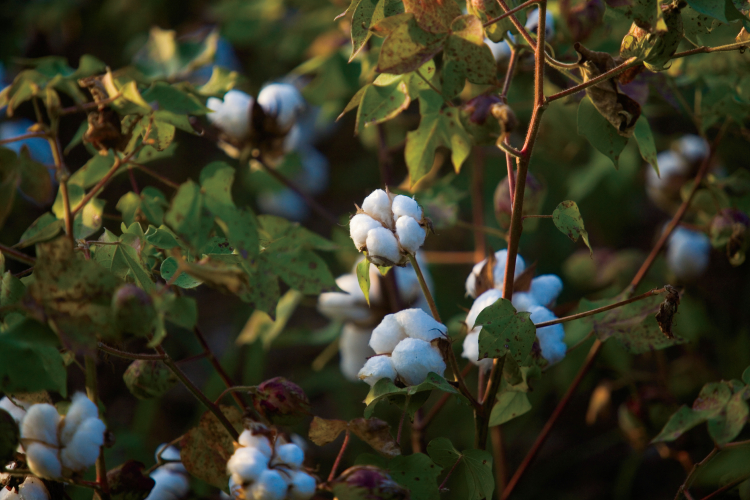Home > Georgia > Georgia Environment > Sustainability First in Georgia
Sustainability First in Georgia
Billy Sanders cannot remember the last time he plowed a field.
“I think we sold our last moldboard plow in the 1990s,” says the Vienna farmer. He farms more than 5,000 acres in the Upper Coastal Plain without a plow, using a method called strip-till.
Georgia’s farmers are among the country’s leaders in strip-tillage, a minimum-tillage system that disturbs less than one-third of a field’s soil. Using specialized strip-till and no-till equipment that only tills the rows where crops are planted helps improve the soil’s structure and water-holding capacity.
“If you’re not taking care of the soil, you don’t have healthy soil, and you’re not going to have a good crop,” says Brent Dykes, executive director of the Georgia Soil and Water Conservation Commission. Farmers like Billy Sanders fine-tune conservation methods to fit each farm, finding ways to keep the soil healthy and farms sustainable.
“We are constantly improving our strip-till system,” Sanders says. He and his son, Johnny, grow cotton, peanuts, wheat, corn and soybeans. They sometimes engineer conservation tillage equipment, such as a 38-foot “rower,” a tillage attachment Johnny designed and built in their farm shop. Farmers also help fine-tune the computer programs that guide equipment within an inch or two of the strip-till rows.
“With conservation work, the precision systems are absolutely necessary. They allow you to keep your row in the right place,” Billy Sanders says.
That keeps pesticides and fertilizer applied in only the amounts needed to grow healthy crops, eliminating potential runoff.
Much conservation tillage involves sowing cover crops after fall harvest to minimize topsoil loss during winter, while producing more organic matter in the field for the spring.
“We want as much cover crop growth in the winter as we can get,” says Sanders, who adds that cereal rye works best as a cover for their fields. “Planting cover crops is a big expense, but it’s very important for conservation work.”
Conservation work is not just about crops. Farmers like Sanders also care for Georgia’s pine forests.
“We’ve favored planting a longleaf pine, which is native to the region,” Sanders says. “Our crop fields are relatively small. Many (of the fields) are right next to pines.” Longleaf pines, planted for timber, will grow for 15 years before harvest. Precision planting and spraying methods keep potentially damaging sprays away from forests.
Conservation tillage can also decrease the amount of irrigation water needed. University of Georgia and United States Department of Agriculture researchers say strip-till practices can increase water infiltration by as much as 30 to 45 percent over traditional tillage systems, reducing the amount of water needed for Georgia’s many center-pivot crop irrigation systems.
Other irrigation technology helps save water. New irrigation nozzles spray water in droplets like rain, reducing water loss from evaporation and wind drift. Variable Rate Irrigation technology uses global positioning software to adjust for temperature and soil moisture while avoiding water application on non-crop areas like roadways. Such technology reduces irrigation water usage an average of 17 percent.
VRI systems are still taking off, with less than 70 used in Georgia in 2012. To increase their use and help improve system efficiency, the Flint River Soil and Water Conservation District was awarded a $1.2 million Conservation Innovation Grant through the USDA’s Natural Resources Conservation Service to install and research techniques on 10 new Variable Rate Systems.
Through water meters, farmers also provide data to the state’s Environmental Protection Division on their irrigation water use.
“Over the last decade, Georgia EPD has strengthened its relationship with the agricultural community in order to better understand agricultural water use,” says Cliff Lewis, EPD program manager for agricultural water withdrawal permitting. In that way, farmer cooperation is helping the state maintain a high-quality, safe and adequate water supply for all of Georgia.





